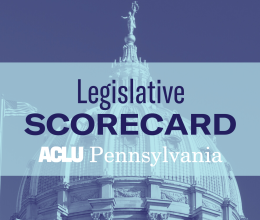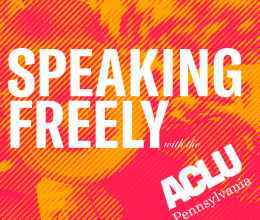
In honor of National Constitution Day and the ACLU’s centennial year, we’re rolling out a list of fun facts about the mighty document that governs our nation. We recommend that you store some of these factoids in your back pocket because on February 29, 2020, we’ll be holding our Centennial Celebration in Philadelphia, and Constitutional Quizzo will allow guests to walk away with some special prizes.
The Constitution’s Birthday
On September 17, 1787, the U.S. Constitution was signed by the delegates* to the Constitutional Convention in Philadelphia, replacing the Articles of Confederation. The Constitution established our national government and fundamental laws and guaranteed certain basic rights for people in the United States (including non-citizens on U.S. soil). The document was ratified on June 21, 1788, and by 1791, the first 10 Amendments, known collectively as the Bill of Rights, had been added; to date, it has been amended a total of 27 times. For more than two centuries, it has remained the supreme law of our nation.
Fun Facts:
- The Constitutional Convention was not convened with the intention of writing a Constitution; delegates met with the plan to revise the Articles of Confederation but later decided that an entirely new document was required.
- When the Constitution was ratified, the U.S. population was four million; Philadelphia was the nation’s largest city, with 40,000 residents.
- Neither Thomas Jefferson nor John Adams signed the Constitution — they were both abroad, Jefferson as Minister to France and Adams as Minister to Great Britain.
- At 4543 words (7762 with Amendments), the Constitution is the shortest written constitution of any major government. It’s also the oldest.
- The word “democracy” does not appear in the Constitution; rather, the Constitution frames America as a republic, where citizens elect representatives to make decisions for them rather than voting on decisions directly.
- During the Constitutional Convention, it was proposed that a popular vote be used to elect presidents; however, after 60 ballots, delegates instead agreed to the indirect system of an Electoral College. The Electoral College is still in place despite 500 proposals to abolish it by amending the Constitution.
- The oldest signer of the Constitution was Benjamin Franklin (81); the youngest was Jonathan Dayton (26).
- The Fourteenth Amendment is often considered part of the Bill of Rights because it ensures that state and local governments are compelled to follow the letter of the federal Constitution. The 14th Amendment is one of the most broadly applied amendments in the Constitution. Its “equal protection” clause requires that states guarantee the same rights, privileges, and protections to all citizens.
- When the Bill of Rights was adopted in 1791, it applied only to the federal government. While the 14th Amendment ensured that state and local governments followed the federal Constitution, that promise was repeatedly tested. It took many years for some of the rights we now take for granted to be guaranteed at the state level; among them: freedom of speech (1925); freedom of the press (1931); freedom of religion (1947); right to a jury trial (1968); prohibition against excessive bail (1971).
- The right to vote as we know it today is not set forth in the original Constitution. When it was ratified, only male property owners could vote. Activists have been fighting for centuries to expand voting rights to all citizens, and here is a list of some of the most significant voting rights amendments made to the Constitution:
- The Fifteenth Amendment (1870); prevents states from denying the right to vote on grounds of “race, color, or previous condition of servitude.”
- The Nineteenth Amendment (1920); women were granted the right to vote.
- The Twenty-sixth Amendment (1971); adults aged 18 to 21 were granted the right to vote. Click here for a voting rights timeline.
*Of the 42 delegates who attended most of the Constitutional Convention, 39 signed — three refused because it did not include a bill of rights.





